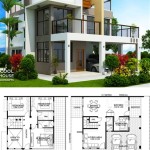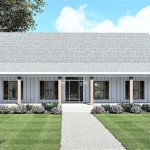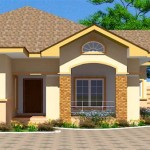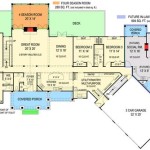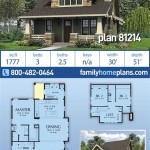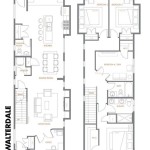```html
What Is The Most Efficient House Floor Plan?
The concept of an “efficient” house floor plan is multifaceted, encompassing a range of considerations from energy conservation and spatial utilization to traffic flow and cost-effectiveness. There is no single, universally “most efficient” plan, as the ideal layout is highly dependent on individual needs, lifestyle, site conditions, and budget constraints. However, several key principles and common floor plan types consistently demonstrate better performance in terms of functionality and resource management.
Efficiency in a house plan translates to maximizing usability while minimizing wasted space and energy consumption. This involves careful consideration of room sizes and arrangements, the integration of natural light and ventilation, and the overall flow of movement throughout the house. A well-designed efficient floor plan aims to reduce heating and cooling costs, streamline daily routines, and create a comfortable and functional living environment without unnecessary square footage.
To understand the elements of an efficient house floor plan, it's crucial to analyze factors such as the orientation of the house on the lot, climate considerations, and the specific needs of the occupants. The goal is to create a harmonious balance between form and function, resulting in a home that is both aesthetically pleasing and resourcefully designed.
Open Concept Living
Open concept floor plans have gained significant popularity due to their perceived spaciousness and enhanced social interaction. These layouts typically combine the kitchen, dining area, and living room into a single, large, interconnected space. Efficiency is achieved by eliminating unnecessary walls and hallways, which reduces construction costs and maximizes the use of available square footage. The open layout also allows for better natural light penetration, potentially reducing the need for artificial lighting during the day.
However, the open concept approach is not without its drawbacks. Noise can travel easily between zones, potentially disrupting activities in different areas. Cooking odors can also permeate the entire space. Careful consideration must be given to acoustics and ventilation to mitigate these issues. Zoning can be achieved through strategic furniture placement, changes in flooring, or the use of partial walls to define separate areas within the open space.
From an energy efficiency standpoint, open concept plans can be more challenging to heat and cool uniformly. Large, undivided spaces require a more powerful HVAC system, which may increase energy consumption. Proper insulation and strategically placed windows are essential to optimize energy performance in open concept homes. Furthermore, the lack of walls for furniture placement can sometimes limit design flexibility. While seemingly more spacious, efficient open concept designs require careful planning to avoid feeling cavernous or underutilized.
The Ranch-Style House
Ranch-style homes, typically characterized by their single-story layout and long, low profile, often embody principles of efficient design. Their inherently compact footprint minimizes the need for stairs, making them particularly suitable for individuals with mobility limitations or those seeking single-level living. This streamlined design also facilitates simpler and more cost-effective construction.
The rectangular shape of many ranch-style homes contributes to their energy efficiency. With fewer corners and a smaller surface area exposed to the elements compared to multi-story homes, heat loss and gain are reduced. This simplifies climate control and can lead to lower energy bills. However, the horizontal spread of ranch-style homes can sometimes result in longer hallways, which might be considered wasted space. Efficient ranch designs mitigate this by carefully planning the layout to minimize hallway length and maximize the usability of each room.
The accessibility of all rooms on a single level is a significant advantage, promoting ease of movement and making the house more adaptable to changing life stages. Ranch-style homes also lend themselves well to outdoor living, with easy access to patios, decks, and gardens. Effective ranch-style floor plans prioritize a clear separation between public and private spaces, providing a comfortable and functional living environment for both residents and guests. Landscaping can also play a role in energy efficiency, with strategically planted trees providing shade during the summer months and windbreaks in the winter.
Considerations for Smaller Homes
In the pursuit of efficiency, smaller homes inherently possess an advantage. Reducing the overall square footage of a house directly translates to lower construction costs, reduced energy consumption, and less maintenance. Efficient floor plans for smaller homes focus on maximizing the usability of every square foot, often incorporating multi-functional spaces and clever storage solutions.
Vertical space becomes particularly valuable in smaller homes. Utilizing high ceilings or incorporating lofts can create a sense of spaciousness and provide additional storage or living areas. Built-in furniture, such as shelves and cabinets, can optimize storage and reduce clutter. Smart design choices, such as pocket doors and sliding barn doors, can save space compared to traditional swinging doors.
Careful planning of the kitchen and bathroom is crucial in smaller homes. Compact appliances and space-saving fixtures can significantly increase the usability of these rooms. Open shelving in the kitchen can create a more airy feel, while strategically placed mirrors can enhance the perception of space in smaller bathrooms. Prioritizing natural light and ventilation is also essential for creating a comfortable and inviting atmosphere in smaller homes. The efficient use of space in smaller homes requires meticulous planning and a focus on functionality and minimizing non essential elements.
Another crucial aspect of efficient floor plan design is the placement of windows. Windows should be positioned to maximize natural light and ventilation while minimizing unwanted solar heat gain. In colder climates, south-facing windows can provide passive solar heating during the winter months. In warmer climates, shading devices such as overhangs, awnings, or strategically planted trees can help to reduce solar heat gain and keep the house cooler. The size and placement of windows should be carefully considered in relation to the orientation of the house on the lot and the prevailing climate conditions.
Ultimately, the most efficient house floor plan is one that aligns with the specific needs and priorities of the occupants. It maximizes the usability of space, minimizes energy consumption, and creates a comfortable and functional living environment. Careful planning, attention to detail, and a focus on sustainability are essential for achieving a truly efficient and satisfying home.
```
Cool Energy Efficient Concrete House Plans Houseplans Blog Com
Est House Plans To Build Simple With Style Blog Eplans Com

Affordable Home Design Efficient Floor Plans

Est House Plans To Build Simple With Style Blog Eplans Com

Cool Energy Efficient Concrete House Plans Houseplans Blog Com

Est House Plans To Build Simple With Style Blog Eplans Com

Floor Plans Are The Backbone To A Good Design And Serve As Most Efficient Way See Your Home Before It Dream House Mansion Plan

Easy To Build Houses And Floor Plans Houseplans Blog Com

Cool Energy Efficient Concrete House Plans Houseplans Blog Com

Cool Energy Efficient Concrete House Plans Houseplans Blog Com

